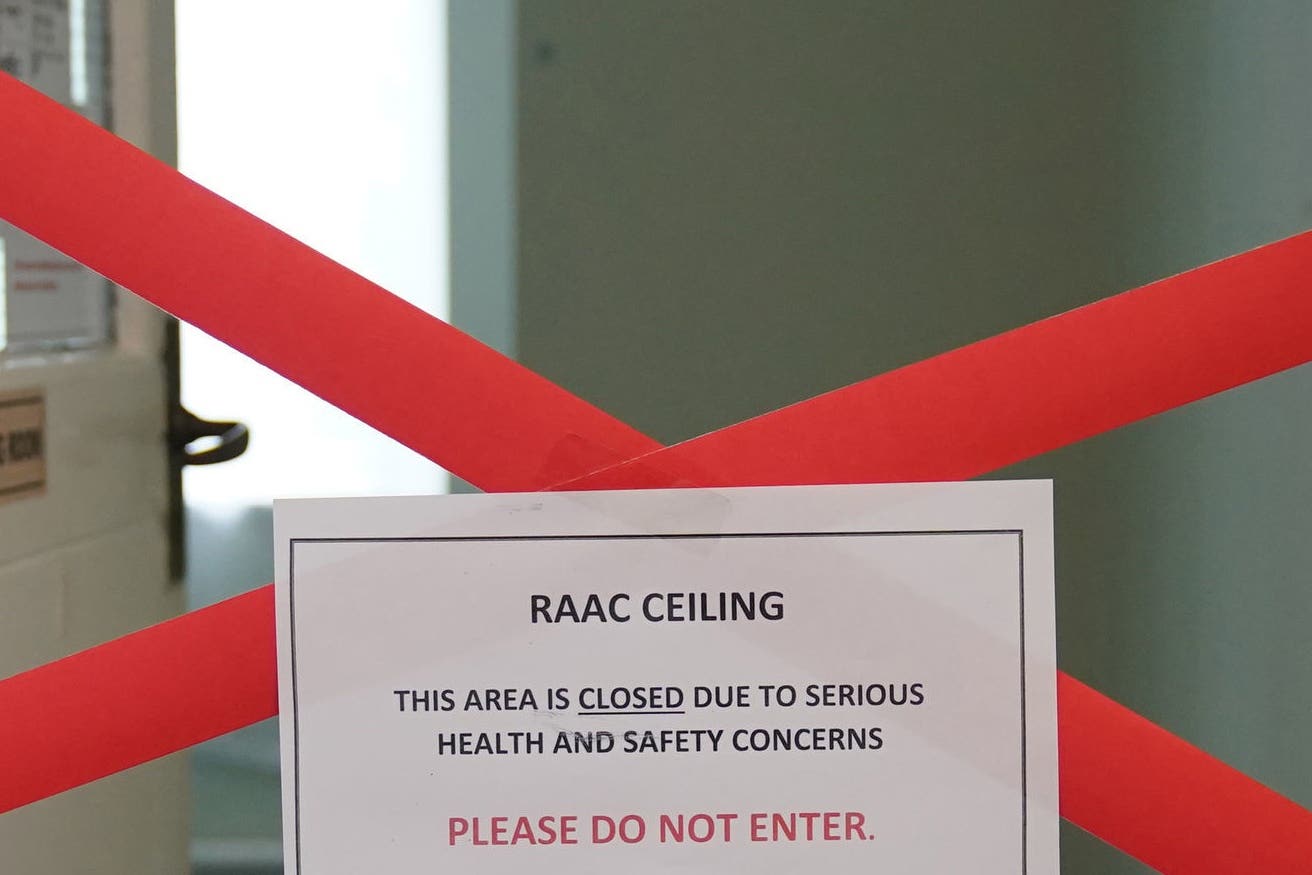Raac hospital rebuilds will go ahead despite spending review, MPs told
Hospitals made of the crumbling concrete will be spared from the review instituted by Rachel Reeves in a bid to save public money.

Hospitals built from crumbling concrete will be “replaced as a priority” and spared from a spending review Rachel Reeves vowed to undertake, a letter to MPs suggests.
The Chancellor announced in July that all projects within the New Hospitals Programme promised by the previous Conservative government would be placed under a spending review.
But seven hospitals built with reinforced autoclaved aerated concrete (Raac) across England will not be subject to this, a letter sent by Health Secretary Wes Streeting to MPs has now suggested.
The lightweight concrete was used in public buildings including schools and hospitals between the 1950s and 1990s, but is less durable than more traditional materials and has started to deteriorate.
“Central to the review is the understanding that the hospitals built primarily from Reinforced Autoclaved Aerated Concrete (Raac) need to be replaced as a priority, to protect patient and staff safety,” Mr Streeting’s letter said.
Listed among the projects outside the scope of the review were seven hospitals earmarked for rebuilding due to the heavy presence of Raac.
They include Airedale General Hospital in West Yorkshire, Frimley Park Hospital in Surrey, Hinchingbrooke Hospital in Cambridgeshire, James Paget Hospital in Great Yarmouth and Queen Elizabeth Hospital, King’s Lynn, both in Norfolk, Leighton Hospital in Cheshire, and West Suffolk Hospital in Bury St Edmunds.
Five other hospitals were also deemed outside of the scope of the review, including Alumhurst Road Children’s Mental Health Unit, Dorset County Hospital, Poole Hospital, Royal Bournemouth Hospital, and St Ann’s Hospital, all in Dorset.
In his letter, Mr Streeting said the Government wanted to see the New Hospital Programme completed but was “not prepared to offer people false hope about how soon they will benefit from the facilities they deserve”.
He insisted to MPs the programme needed to be reset to “put it on a sustainable footing”.
James Wild, the Conservative MP for North West Norfolk, welcomed news the Queen Elizabeth Hospital in King’s Lynn would proceed.
The ageing building’s roof is being held up by thousands of steel and wooden props to prevent it from collapsing.
“This has been my priority since I was elected in 2019 and the last Conservative government recognised the need and prioritised QEH when it reset the programme a year ago,” Mr Wild said.
“I’ll continue working with the QEH Trust and others to ensure we have the new hospital by 2030 for our community.”
A Department of Health and Social Care spokesperson said: “We inherited a New Hospitals Programme that is undeliverable and unfunded.
“We will be honest with patients and will put the programme on a sustainable footing.
“Patient safety is our biggest concern, so rebuilds of hospitals built primarily from Raac, alongside those where the full business case is already approved, will continue as planned.
“Our review will provide a thorough, costed, and realistic timeline for delivery of the rest of the programme to ensure we can replace the crumbling hospital estate in England.
“This, alongside the fundamental reforms that will be introduced in our 10-year plan, will ensure we build an NHS that is fit for the future.”
Bookmark popover
Removed from bookmarks